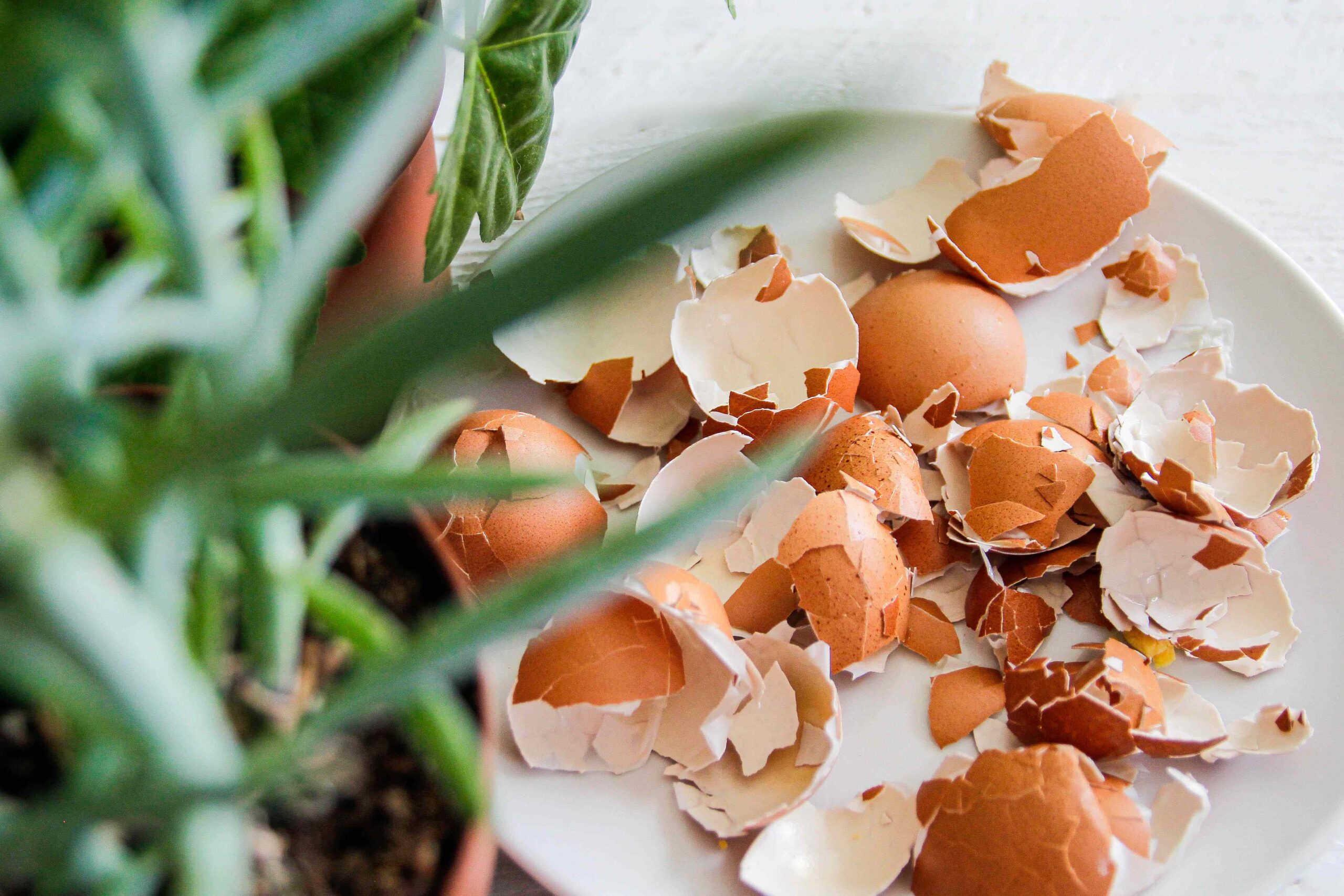Eggshells are a popular folk method for growing healthy, vigorous garden plants like tomatoes. But is there any proof to back up those benefits?
Here’s a look at whether eggshells are good for plants, plus tips for how and when to use them effectively.
Are Eggshells Good for Plants?
Eggshells can be beneficial in the garden because they contain calcium, a necessary micronutrient for plant health. Eggshells can add calcium to garden soil when added to a compost pile or vermicomposting bin, or when added directly to the planting hole.
However, eggshells will only be beneficial for plants if your soil is already deficient in calcium. The best way to know whether your soil is deficient in calcium is to conduct a soil test.
Eggshells must be processed properly before they’re used to make the calcium available for plants to take up with their roots. Simply crushing up the eggshells with your hands doesn’t make much of a difference.
Instead, eggshells must be ground into a fine powder with a coffee grinder or blender to make the calcium they contain available to your plants.
Want more gardening tips? Sign up for our free gardening newsletter for our best growing tips, troubleshooting hacks, and more!
How to Use Eggshells in the Garden
- Compost pile: Add finely ground eggshells to your compost pile to ensure adequate calcium.
- Worm bin: After grinding eggshells, add them to your vermicomposting system. Their added grit can assist with the worms’ digestion.
- Transplanting seedlings: If your soil has a calcium deficiency, try adding a handful of finely ground eggshell to the planting hole when transplanting seedlings like tomatoes and peppers.
- Soil drench: Another way to ensure that the calcium in eggshells is available to plants is to extract it in water. Boil 10 to 20 eggshells in water and allow the mixture to steep for several hours or overnight. Strain away the shells and apply two cups of the solution to the soil around your plants every two weeks.
What Plants Benefit Most From Eggshells
Popular garden plants, including tomatoes, peppers, eggplants, watermelons, and both summer and winter squashes, require adequate calcium in the soil to fruit properly.
Without sufficient calcium, these plants can experience an issue called blossom-end rot, which causes the lower ends of fruits to turn black and shrink as they develop.
However, adding calcium in the form of eggshells may not address blossom-end rot. That’s because this condition is often caused by water uptake issues. When garden plants can’t adequately transport the water in which calcium is dissolved, this essential nutrient may not be able to make it up to the fruit.
If a soil test indicates that your garden isn’t deficient in calcium but you still experience blossom-end rot, it’s likely that your plant isn’t getting enough water due to causes like inconsistent watering, not enough mulch to maintain soil moisture, or damage to roots.
Misconceptions About Using Eggshells in the Garden
- Adding crushed eggshells to compost or soil isn’t an effective way to use them in the garden. Shells must be ground into a fine powder in order to be absorbed by plant roots.
- Eggshells can only help your plants if your soil is deficient in calcium. Conduct a soil test before planting to know for sure.
- Eggshells aren’t an effective deterrent for garden pests.
- Cracked eggshells aren’t ideal for seed starting. The average chicken egg is too small to allow for sufficient growth, meaning you’d have to transplant seedlings into another container early and risk damaging them.
FAQ
-
Large pieces of eggshell can take a year or more to break down enough so that their calcium is bioavailable to plants in your garden. If you do choose to add eggshells to your soil, be sure to grind or pulverize them finely first to make that micronutrient available more quickly.
-
If you’re using a high-quality potting mix and fertilizing your indoor plants regularly, it’s not necessary or beneficial to add eggshells to their soil.
-
It’s not necessary to boil or bake eggshells before adding them to compost or garden soil. However, you’ll want to rinse out any egg residue and let the shells dry completely, then grind them up finely in a blender or coffee grinder before using them.









